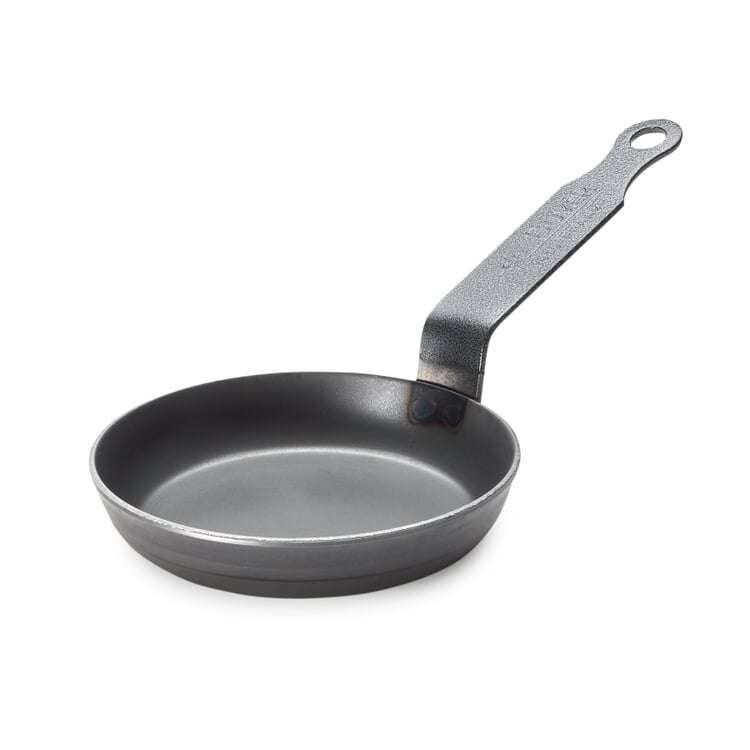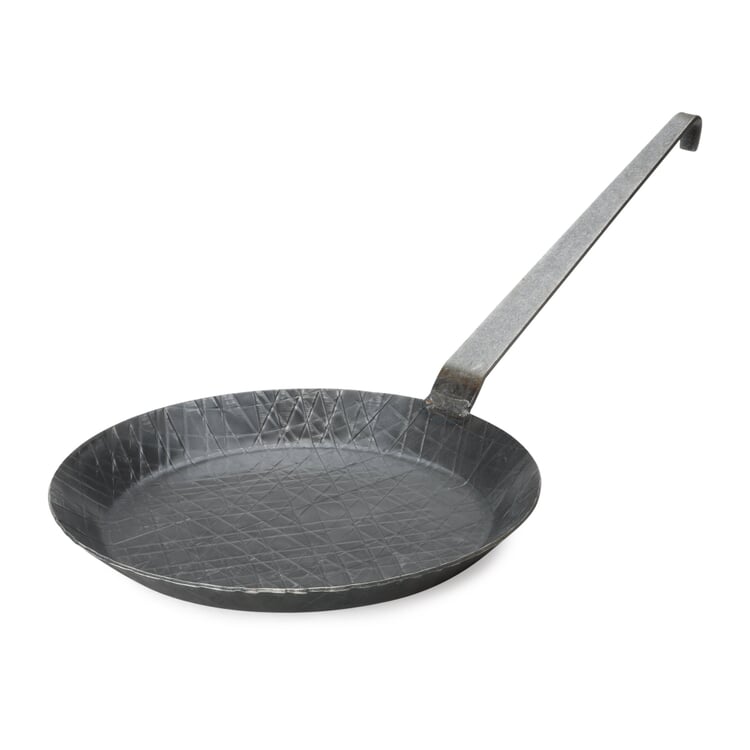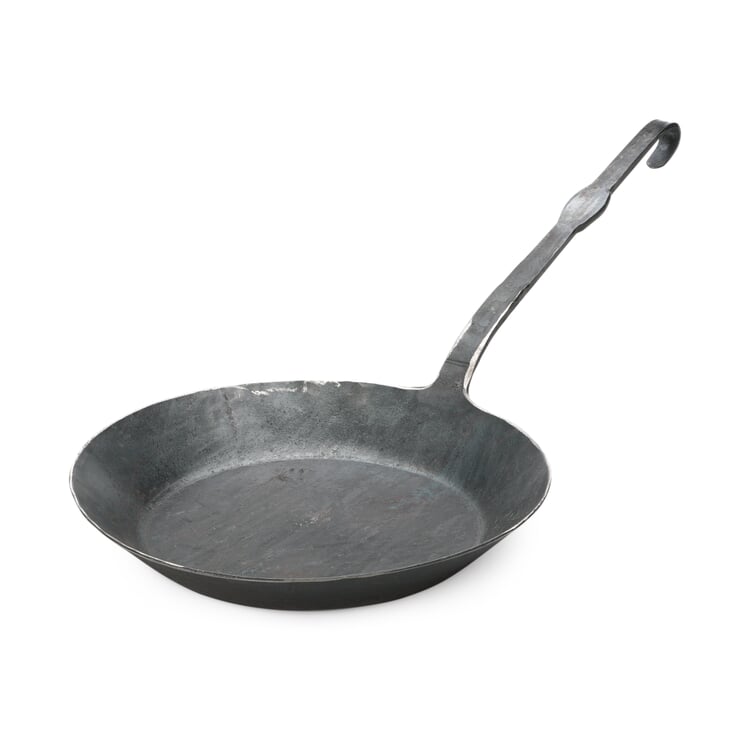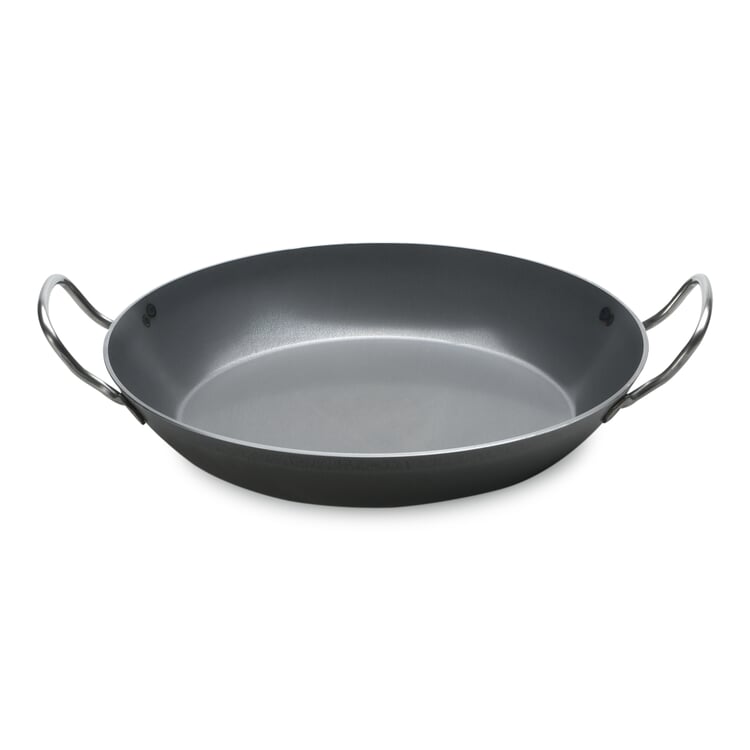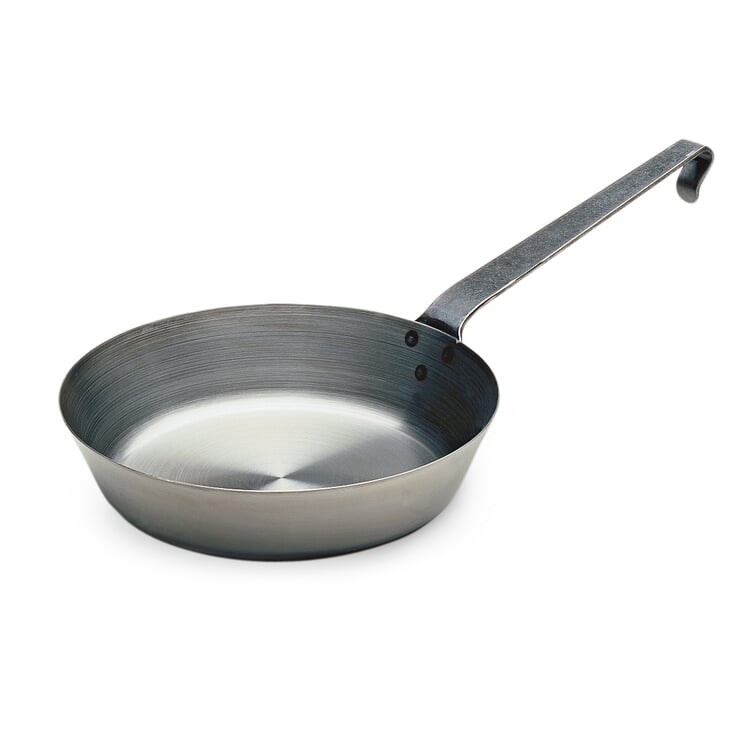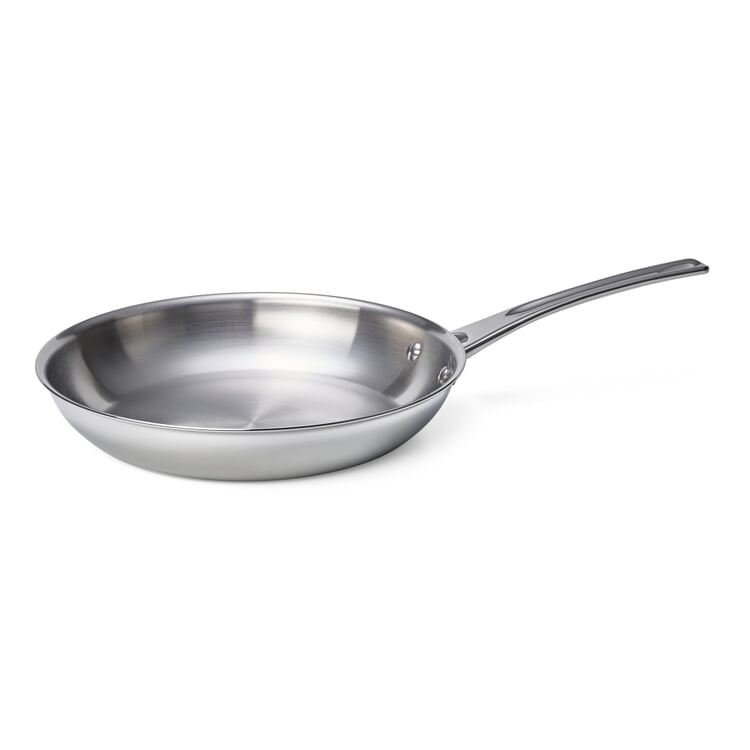Helpful tips
Pans for every purpose. A little usage guide
Whether a dish is successful depends largely on its preparation. This can be continued, because whether the preparation is successful also depends on the choice of pot or frying pan you use. A coated pan will never heat high enough to sear a steak to perfection in it (think of the dark, caramelized crust on the outside interacting with the au point cooked interior to make it delicious) or brown roasted potatoes to just the right crisp. For such purposes, an iron skillet is more suitable, while the coated one is more suitable for the preparation of delicate cooked food (fish, egg dishes). It's a different story if you're looking for a skillet for sauteing or swirling finely chopped vegetables and meat, because soon the shape of the utensil (and its weight) will matter more. If you want to learn this technique - supported by plenty of butter or frying fat, which quickly (meaning: faster than air) transfers the heat to the food and thus ensures an even result, preferably without burning - we recommend a pan with a higher and slightly flared edge, such as our saute pan. It is made of iron, can be brought to the required temperature and is not too heavy, so that you can shake it well and keep all the ingredients moving in it.
In detail: twelve pans and their strengths
You have to be able to heat a pan to a high temperature, and it has to transfer the heat to its contents as undiminished as possible. Natural iron is unrivaled in this. This pan is suitable for blini (recipe enclosed), crepes or a fried egg, hash browns or mini tartes tatin. For all types of stoves (glass-ceramic only conditionally). Ø 9 cm, rim height 2.5 cm. Material thickness 2,5 mm. Weight 470 g.
Heavy, indestructible wrought iron pan with forged, welded hook handle. The material is compressed during forging in the die, therefore the pan can be heated high - perfect for steak and anything that needs to be seared hot. For all types of stoves; on glass-ceramic iron can leave traces. Material thickness 3.5 mm. Bottom Ø 25 cm, top Ø 32 cm, rim height 3.5 cm, total length 61 cm. Weight 2 kg.
This coated pan offers the best, literally "highly efficient" frying properties and is particularly recommended for the preparation of fish. It is suitable for all types of stoves and is also oven-safe. Made of three layers of ferromagnetic steel and aluminum, it makes optimum use of the good thermal conductivity of the light metal. The coating of quartz ceramic and PEK (Duraquarz®) on the outside and inside is applied solvent-free. Stainless steel handle, riveted. Made in Lower Saxony. Base Ø 24 cm, top Ø 28 cm. Rim height 5 cm. Total length 48 cm. Weight 1 kg.
Heavy, indestructible, rustic: this pan is suitable for the "strictest" use. With its extra-high rim, it is drop-forged from one piece of iron at Turk just for us. It can be recognized by the widening on the upper handle and the rhombus. Its heat behavior clearly surpasses that of rolled pans. Fried potatoes turn out perfectly in it. Suitable for all types of stoves (may leave marks on glass-ceramic). You can find other sizes of the pan in the online store. Base Ø 21 cm, top Ø 29 cm, rim height 4.3 cm, total length 55 cm. Weight 1.8 kg.
Enameled iron can be heated to the same high temperature as iron left raw. The pan does not need to be fried and does not deposit the "frying layer" common to raw iron pans. The enamel coating counteracts caking of the food being fried. Do not bring hot pan into contact with cold water. Enameled steel handle. Material thickness 2 mm. Bottom Ø 22 cm, top Ø 30 cm, rim height 5.5 cm, total length 54 cm. Weight 1,5 kg.
Copper and induction don't usually go well together. There's a simple reason for this: the precious metal is not magnetic. The Belgian manufacturer Falk Culinair has found a remedy by laying a 2-mm-thick layer of copper in the core, surrounded on both sides by stainless steel (18/10). This makes the satin-finished exterior ferromagnetic and the pan induction-compatible. For steaming, sautéing and stir-fried dishes. Riveted stainless steel handle. Base Ø 20.5 cm, top Ø 24 cm, rim height 4.5 cm, total length 43.5 cm. Weight 1.8 kg
Professionals prefer the classic iron pan: in terms of taste and health, dishes prepared in the uncoated iron pan are unsurpassable. All-round pan, suitable for all types of stoves (may leave marks on glass-ceramic). The stove top should not be smaller than the bottom of the pan. Bottom Ø 21 cm, rim Ø 28 cm, total length 49 cm, height 4.5 cm. Material thickness 3 mm. Weight approx. 2.1 kg.
This pan comes (like the small iron pan and the frying pan iron) from de Buyer, a French-based company that manufactures kitchen utensils since 1830 - also in rolled iron as here. With its two short handles, it saves space in the cupboard and is easy to use on the stove. For cooking vegetables, rice, etc. and as a serving pan. Material thickness 3 mm. For all types of stoves. Bottom Ø 24 cm, top Ø 31.5 cm, rim height 5 cm. Weight 2,5 kg.
With its 6.5 cm high rim, this gastronomy pan allows sauteing - short frying while tilting the pan - without any problems, even for the inexperienced. Made in Germany. Unalloyed steel (3 mm thick). Wrought iron handle. Base Ø 19 cm, rim Ø 26 cm, height 6.5 cm. Total length 50 cm. Weight 1,5 kg.
From Silampos. The three-layer principle - with an aluminum alloy coated by stainless steel in the core - predestines the pan for energy-saving preparation, e.g. for steaming or frying vegetables. Suitable for all types of stoves. The riveted handle has a small recess at the bottom (as a cold bridge), so the pan is optimized for use on the gas stove. Can be cleaned in the dishwasher. Stainless steel 18/10, made in Portugal. Ø bottom 19,5 cm, Ø top 26 cm. Rim height 5 cm. Total length 46,5 cm. Weight 1 kg.
- The thickness of the bottom of the pan is crucial for even heating, supported by the material of the pan
- The diameter of the heat source should match the diameter of the bottom of the pan: Any pan will cook unevenly on a surface that is too small
- Be sure to cover the bottom of the pan evenly with food. This prevents hot spots where meat or vegetables can burn, and is especially true when sauteing and stir-frying



